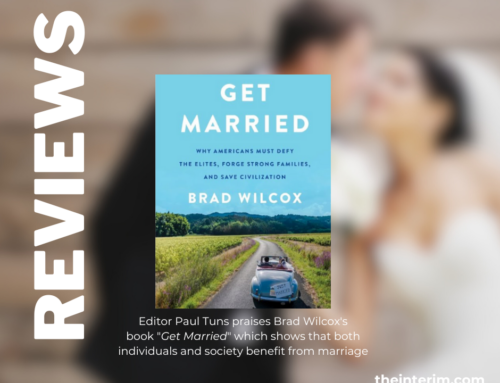 Marriage: The Dream That Refuses to Die, by Elizabeth Fox-Genovese
Marriage: The Dream That Refuses to Die, by Elizabeth Fox-Genovese
(Intercollegiate Studies Institute, $33.50, 196 pages)
The push for same-sex “marriage” in much of the Western world is only the most recent example of how the concept of marriage has changed. As Elizabeth Fox-Genovese demonstrates in Marriage: The Dream That Refuses to Die, the movement to redefine marriage as a relationship between any two adults is the logical result of the past century’s emphasis on individual rights and choices, at the expense of individual duty, family continuity and communal stability. Marriage is now widely seen as one valid lifestyle choice among many and primarily as an avenue for personal happiness and fulfillment. This conception is fundamentally contrary to the historical understanding of marriage.
Traditionally, marriage has served as a stable foundation for society at all levels. Families are built on successful marriages and communities require a critical mass of households made up of a husband, wife and their children. In the more distant past, even the relationships between tribes and nations were underpinned by formal alliances through marriage. Dynasties and marriages of state are now archaic concerns, but the economic purpose of marriage is with us still, as demonstrated by prenuptial agreements and litigious divorces.
The political revolutions of the late 18th and early 19th centuries spurred an equally revolutionary change in marriage, according to Fox-Genovese, a prominent historian until her death last year. Companionate marriage, in which young men and women chose their own mates (albeit within boundaries established by their families and social class) and married for love, became the ideal. The politics and philosophy of the time placed a growing emphasis on the individual. This enhanced the status of women within the family, as great importance was attached to the role played by parents, and especially mothers, in shaping their children’s character.
The celebration of marriage as a loving relationship between husband and wife, and not only a social and religious institution, changed expectations and behaviour. The rise of the Victorian novel, which was almost exclusively concerned with the “marriage plot” and the complexities of finding and marrying the right spouse, is a window into the evolving perception of marriage in the 19th century. It was in the 20th century, though, that less salutary changes to marriage came about. The social services established to help the families of war widows gradually lowered the social and economic cost of single motherhood, no-fault divorce reflected (and hastened) the end of the stigma associated with a failed marriage and the sexual revolution broke the link between marriage and sex.
With matrimony considered simply a personal arrangement, it was perhaps inevitable that legal marriage is now seen primarily as a way to obtain benefits, status and approval. The demand that marriage be available to same-sex couples evolved from this change as surely as the end of the idea that parents owed it to their children to marry and stay married.
Fox-Genovese points out that this redefinition of the purpose and form of marriage, combined with abortion and contraception, created a culture that is very unkind to women and children. Contraception and the weakening of taboos have yielded the expectation of sexual activity before marriage; the availability of abortion has helped to retire the convention that men ought to marry the women they impregnate; and the triumph of personal pleasure over duty means that women and children cannot count on the support of man of the house if he decides his needs will be better met by a divorce.
A Marxist theorist for much of her career, before rejecting secular liberalism and becoming a conservative Catholic, the late Fox-Genovese is well acquainted with the voluminous academic works purporting to show traditional marriage to be oppressive, patriarchal and inherently abusive. She convincingly argues that much 20th-century work on the history of the family was driven by ideology. If there have been as many forms of family as there have been societies, then there is nothing particularly special about a husband, wife and their children and there is no compelling reason not to let everyone define their family according to individual tastes. The reality, she states, is that the traditional definition of marriage and family, and its importance to society, “has persisted throughout human history.”
Marriage: The Dream That Refuses to Die is a concise book that covers a remarkable amount of ground, touching on religion, history, abortion, politics and more. Groundbreaking works like David Blankenhorn’s The Future of Marriage and Barbara Dafoe Whitehead’s The Divorce Culture have provided more detailed research into the social science behind divorce, marriage and family formation, but Fox-Genovese creates here a narrative that ties such works together with a synopsis of why marriage matters and how it became a lifestyle choice rather than a covenant, a matter of personal taste rather than the fundamental social bond upon which society depends.
Rebecca Walberg is a social policy analyst at the Frontier Centre for Public Policy and a contributor to ProWomanProLife.org.




